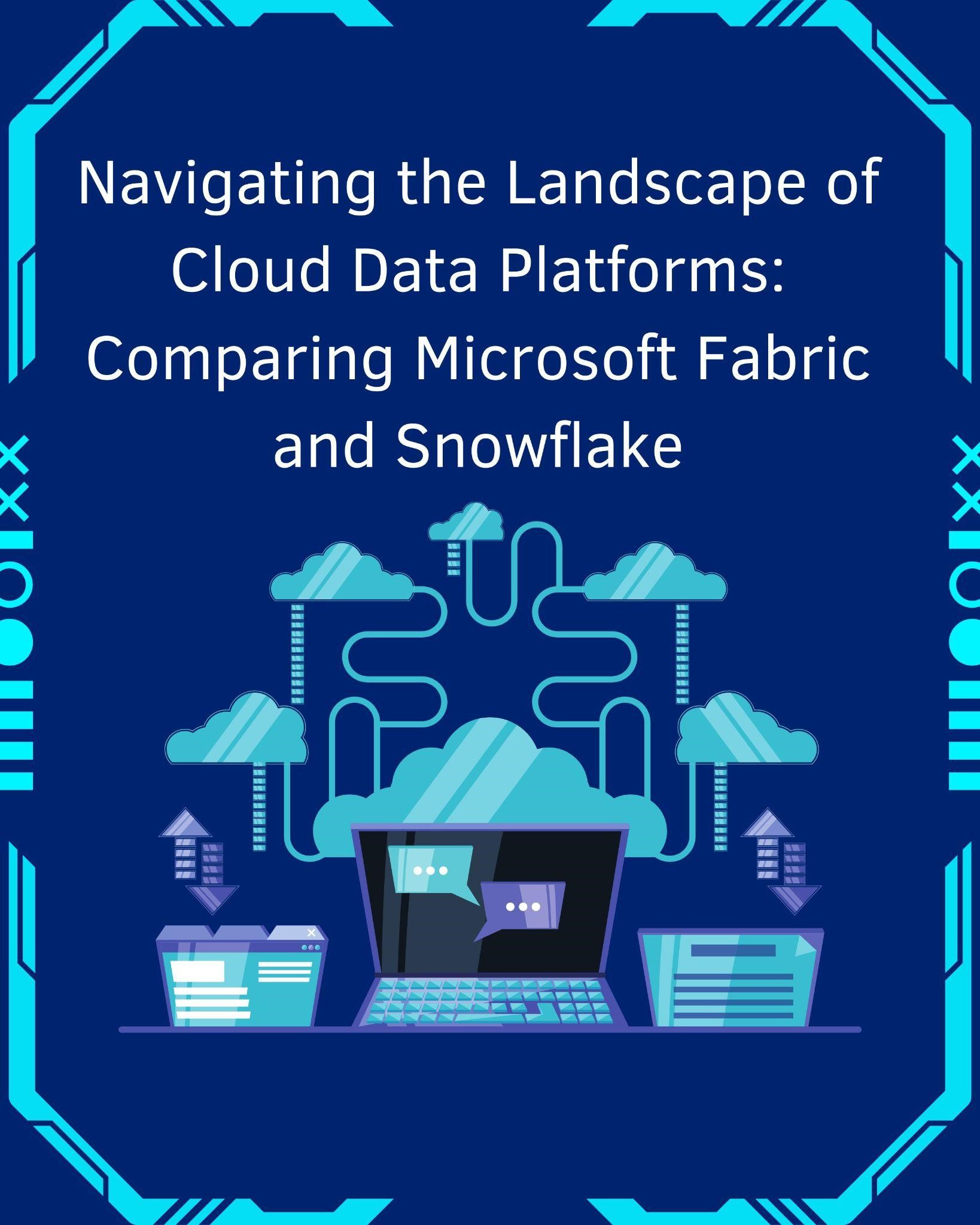Navigating the Landscape of Cloud Data Platforms: Comparing Microsoft Fabric and Snowflake
The evolution of cloud computing has transformed how organizations manage and analyze data, with modern cloud data platforms playing a pivotal role. As highlighted by Karthikeyan Anbalagan, platforms like Microsoft Fabric and Snowflake have gained prominence for their innovative approaches to data management. Each offers distinct capabilities that cater to different data needs, making it essential to understand their unique features.
Architecture: Distinct Foundations for Cloud Data
The architectural design of a cloud data platform significantly impacts its performance and scalability. Microsoft Fabric and Snowflake offer distinct approaches. Microsoft Fabric uses a unified architecture, integrating multiple services within a single ecosystem centered around OneLake, a central data repository for all data types. This integration simplifies data operations by combining storage, transformation, and analytics in one platform. In contrast, Snowflake’s multi-cluster shared data architecture separates storage, compute, and cloud services, allowing independent scaling of resources. This design provides flexibility, cost efficiency, and optimized performance across different workloads.
Data Integration: Different Approaches to Handling Data
Both platforms provide strong data integration capabilities with distinct approaches. Microsoft Fabric uses native tools for integration and transformation, featuring visual design interfaces and code-based support. Its data lake seamlessly integrates across Azure services, ideal for enterprises favoring native solutions. Snowflake, however, leverages its partner ecosystem, offering connectors and support for multiple data formats. It utilizes Snowpipe for continuous data ingestion, emphasizing ELT processes where data is loaded first and transformed using Snowflake’s computing power for efficiency.
Performance and Scalability: Tailored to Different Needs
Performance optimization and scalability are vital for managing large-scale data, with Microsoft Fabric and Snowflake taking different approaches. Microsoft Fabric utilizes Azure’s elastic resources, enabling dynamic scaling of compute and storage to match workload demands, and offers serverless compute for ad-hoc queries. Snowflake’s multi-cluster architecture allows independent scaling via virtual warehouses, optimizing for performance or cost. It efficiently handles high-concurrency workloads and includes auto-suspend features to reduce costs during idle times.
Analytics and AI: Enabling Data-Driven Insights
As organizations increasingly seek to leverage analytics and AI, both platforms offer tools to support these capabilities.
- Microsoft Fabric integrates analytics with data warehousing through tools like Synapse Analytics and Power BI, supporting both T-SQL and Spark SQL. It also provides seamless integration with Azure Machine Learning for end-to-end model development and deployment.
- Snowflake facilitates machine learning through Snowpark, allowing data processing and model training in popular programming languages. Its support for user-defined functions and integration with third-party AI tools enables advanced analytics directly within the platform.
Security and Compliance: Keeping Data Protected
Security is a top priority in cloud data platforms, and both Microsoft Fabric and Snowflake offer robust measures to ensure data protection.
- Microsoft Fabric utilizes Azure’s security infrastructure, including encryption, identity management, and network isolation features. Its adherence to compliance standards such as GDPR and HIPAA makes it suitable for regulated industries.
- Snowflake provides end-to-end encryption and role-based access control, along with features like dynamic data masking. Its multi-cloud capabilities ensure secure data sharing and compliance with major regulatory standards.
Cost Considerations: Balancing Price with Performance
Understanding the cost structure is key to selecting the right platform. Both Microsoft Fabric and Snowflake use consumption-based pricing, but with different approaches. Microsoft Fabric integrates with existing Azure services, potentially reducing initial costs, and offers serverless options and reserved capacity for cost control. Snowflake’s credit-based system includes auto-scaling for resource optimization. Its flexibility across multi-cloud environments allows enterprises to achieve additional savings when managing resources across various cloud providers.
Choosing the Right Platform: Tailoring to Business Needs
The decision between Microsoft Fabric and Snowflake depends on an organization’s specific requirements and existing technology stack. Fabric’s deep integration within the Azure ecosystem offers a unified experience for companies invested in Microsoft technologies, while Snowflake’s multi-cloud flexibility and data sharing capabilities make it appealing for businesses seeking scalability across diverse environments.
In conclusion, Karthikeyan Anbalagan‘s analysis highlights the strengths and unique features of Microsoft Fabric and Snowflake. As organizations navigate the landscape of cloud data platforms, understanding the architectural differences, integration approaches, and cost structures of these solutions will guide them in making informed decisions tailored to their data strategies.

